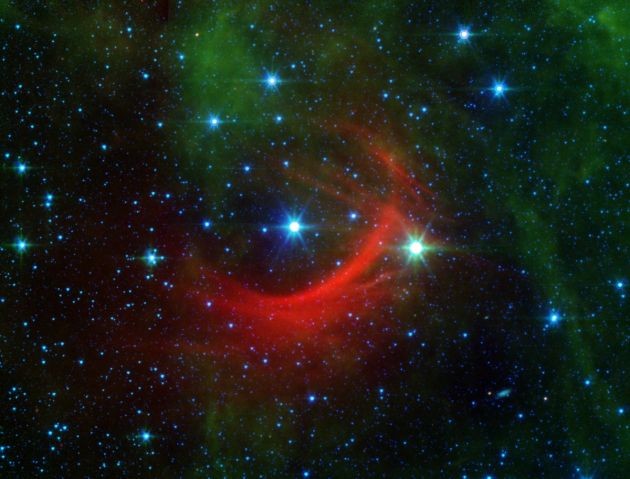Astronomy news: Fastest-moving stars in the Milky Way discovered

Roughly 100 so-called "runaway stars" in the Milky Way hurtled through space at incredible speeds, creating shockwaves that helped astronomers to discover them.
These shockwaves, also known as bow shocks, are created in front of a star when it is moving at a speed of more than 50,000 miles per hour (or 80,000 kilometers per hour) — 65 times faster than the speed of sound. The Sun itself is plowing through the galaxy at 45,000 mph. These shocks can be compared to the waves in front of a ship when it moves through water (as shown in the picture below).

"Some stars get the boot when their companion star explodes in a supernova, and others can get kicked out of crowded star clusters. The gravitational boost increases a star's speed relative to other stars," explained William Chick, a doctoral student at the University of Wyoming (UW) and lead author of the research.
Detection of these bow shocks is possible through the use of infrared telescopes. With the aid of NASA's Spitzer Space Telescope and Wide-field Infrared Survey Explorer (WISE) and Wyoming Infrared Observatory (WIRO) on Jelm Mountain, southwest of Laramie, Wyoming, the researchers were able to get images of these "fuzzy red arcs."
Chip Kobulnicky, a physicist at UW and Chick's supervisor, said, "These are a previously uncatalogued collection of fascinating stars. These are hot, massive stars that are moving through interstellar space at supersonic speed."
The researchers are not dismissing the possibility,though, that the arc-shaped features may not be from runaway stars. They could be mere dust from stars or or birth clouds that surround newborn stars. The team has to do more observations to confirm that these arcs are indeed bow shocks.
The bow shocks differ in sizes because of the varying speed and sizes of the stars that had caused them. In case of the Sun, since it is a slow moving star, its bow shock is nearly invisible.